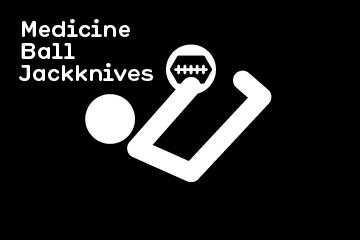
If you’re active and moving your body, it’s almost a guarantee that at some point you will experience an injury.
Injuries can include everything from a pulled muscle to a broken bone.
This isn’t necessarily a bad thing—as you challenge your body and push your limits, you’ll inevitably run into minor injuries from time to time.
Yet when you get injured and can’t work out in the ways you’re used to, it’s easy to get discouraged.
This can lead to falling into unhealthy habits, or giving up exercise entirely.
At its worst, the mindset of “I can’t” starts to creep back in….
- I can’t EVER do this exercise because of my injury
- I can’t work out consistently without getting injured
- I can’t ever get back to where I was pre-injury
It might not feel that way at the time, but these kinds of statements are often much more detrimental than the physical injury itself.
Here’s how to get out of the “I can’t” territory and bounce back from injuries in a healthy, sustainable way:
Using Injuries as an Opportunity to Grow
Rather than let an injury sideline you over the long term, think of injuries as an opportunity to grow.
One of the gals I train with at my local boxing gym fell while walking on an uneven sidewalk. When she fell, she caught her hand in a way that ripped the ligament from the bone (ouch!).
She needed surgery and wasn’t allowed to use her hand AT ALL for the next few months, let alone punch things with it.
For this dedicated athlete, the injury was devastating. She was training for her first amateur boxing fight later this year, and her injury put all of her training to a halt.
Yet rather than let it completely sideline her, she used it as a chance to grow in other areas she hadn’t been focusing on previously.
She worked her footwork, built up her conditioning with lots of sprints and HIIT workouts, and shadow boxed using visualization techniques as much as possible.
The key here is that she kept training – she just switched up her routine to focus on things she COULD do, rather than get depressed about what she couldn’t.
By the time she got doctor approval to hit things again, she had actually made progress in a lot of areas she had previously neglected.
Shifting Your Focus and Gaining Perspective
It’s not always easy to have perspective, but if and when you do have an injury – no matter how small – use it as an opportunity to grow in areas you may be lacking in.
For example, if you’ve injured a specific part of your body, such as your foot or your knee, you can still do plenty of upper body and core work. Or if you’ve pulled a muscle, try massage or yoga once the inflammation has subsided to work that muscle back to its full strength.
One of the hardest things for active people to deal with is having to take a break from intense workouts altogether. If this happens to you, try to focus on a different part of health and fitness entirely. Here are some ideas:
- Invest your time into healthy eating. Spend time looking for new recipes, try new ingredients, and prep batches of healthy snacks that you can utilize when you’re back in a workout routine.
- Get more into the mental side of fitness and performance. If you’ve never tried to work on your mindset through meditation and visualization techniques, this is the time to give it a go.
- Use this time to rest your body and recover from your workouts. If you’re anything like me, you struggle with the rest part of health and fitness (it’s important!). But when you’re injured you have to slow down. Let yourself rest and see how your body feels.
Although injuries and setbacks may feel devastating at the time, with the right approach and perspective they are usually only minor setbacks in the long run.
Go Slowly!
The absolute worst thing you can do when coming back from an injury is to try to get to your pre-injury level too fast.
If you try to start training at full capacity before your injury heals, you put yourself at risk for re-injuring yourself. Even worse, you could create long-term issues that may last for years or more.
(Just look at how many NBA/NFL/MMA athletes have tried to come back too fast after injury and re-injure themselves in their very first game or event back in action).
So take it easy at first and spend the proper time to get back to your pre-injury level. If you’re used to going all out during your workouts, you’ll probably need to step back more than you’re used to with modified versions of your favorite exercises.
It may take a little longer than you want, but easing back into it is really the best move. You’ll still build back the strength you had pre-injury, and you’ll be less likely to hurt yourself again even worse.
The reality of being an active person is that injuries happen.
Rather than letting that throw you off your game, shift your focus to a different healthy habit, and keep working towards your long-term goals.
The post How to Bounce Back from Injury appeared first on 12 Minute Athlete.
from 12 Minute Athlete https://ift.tt/2K5wZRX
via
IFTTT



































